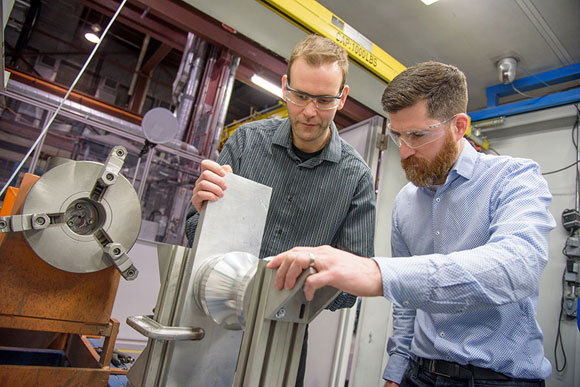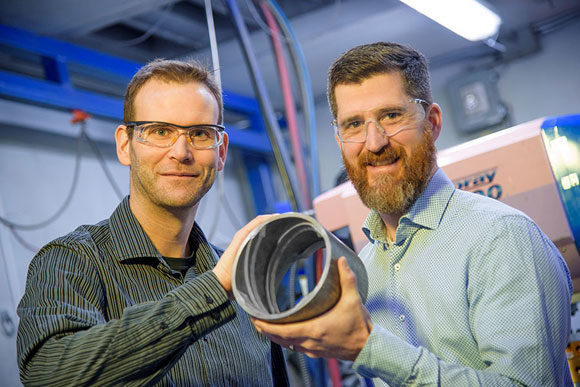The National Research Council of Canada (NRC) developed a new process of fabricating magnets for electric motors without assembly. The fabrication process involves the use of cold spray additive manufacturing technique. The research has been conducted by Fabrice Bernier and Jean-Michel Lamarre.
The use of conventional manufacturing methods such as powder compaction (for sintered magnets) or injection moulding (for bonded magnets) requires the assembly of parts after the manufacturing of magnets. With the cold spray technology, all steps are combined in one.

Cold spray additive manufacturing
With this technique, “a material in fine powder form is accelerated in a high-velocity compressed gas jet. A stream of powder impacts a target at great speed where it starts building up layer upon layer. To control the process, an industrial robot is used to perform rapid and precise 3D movements, allowing the creation of complex shapes.”
A great number of advantages are aroused from this technique:
In addition to significantly reduce costs, this fabrication process enables high buildup rates hence the possibility to produce a great number of kilograms of magnets per hour. Furthermore, once the velocities used in the deposition of the material are combined with the absence of polymer in the material matrix, the magnet intrinsic mechanical properties are far superior to conventional magnets.
These magnets also enable increased thermal conductivity which allows for better temperature control. In addition, they are corrosion and oxidation resistant and will therefore have a longer lifespan.
According to Fabrice Bernier: “this technology will allow the creation of more compact, better performing motors for the future and could pave the way for building entire motors using cold spray technology, offering significant advantages such as cost reduction, better thermal management and more complex geometries and functionalities.”
For further information about 3D Printing, follow us on our social networks and subscribe to our newsletter!






